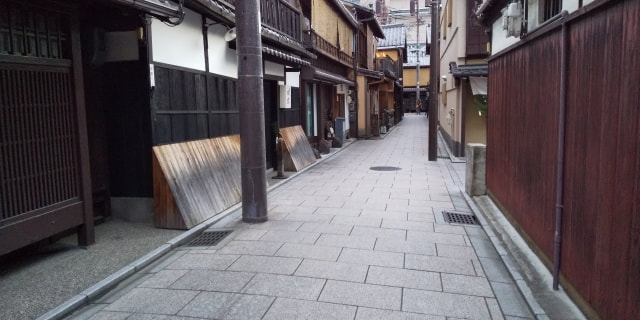|
Have you heard of the term "Set-back"? It may be a word that people who are living in a new condominium do not hear. In areas such as Asakusa and Kanda in Tokyo, Kyoto and Kanazawa in local cities, which have been forming urban areas for a long time, there are many narrow roads where cars can barely pass, and some land faces a road less than 4 m wide. This set-back becomes a big problem when the owner of such a land rebuilds a building. This time, we will explain about what is this set-back, what should owner do when owner need a setback on the land you bought or owned, what happens to the property tax when set-back. What is a Set-back? Set-back means to "retract" the boundary line of the road to your site in order to secure a width of 4m or more that is in contact with the building. Under the Building Standards Act, road width must be at least 4 m. This is the same for private road. However, in some buildings before the law was set, the road width that touches them is less than 4 m. In this case, it is not necessary to move the existing building, and it will be treated as a road under the Building Standards Act (Article 42 Paragraph 2 Road) even if it is not 4 m wide. Instead, when rebuilding a building, it is stipulated that the road width of 4 m will be secured in the future by building a building with a slight retreat. Depending on how far you are going to retreat, you need to keep 2 m from the center line of the road. In other words, if the road is 3 m and the center line is in the middle, you need a set-back of 1 m in total, so you need to setback 50 cm each for your land and the land opposite. What should you do for Set-back?
As mentioned above, a set-back is a road with a width of less than 4 m, and is required when rebuilding a building facing the land. Therefore, it is not necessary when remodeling a building that is already standing (not rebuilding) or when building on a land that has already been set back. To find out if the land where you think about architecture has already been set back, you need to check the center line of the road at the city hall. And when you set back, the part that retreats to the site side is regarded as a road. It is also important to note that the applicable area is not included in the building coverage ratio or floor area ratio. For example, we have to think that if 20 ㎡ of 200 ㎡ must be set back, if the building coverage ratio is 60% (200 ㎡ - 20 ㎡) x 60% = maximum floor size is less than 108 ㎡ , if the floor area ratio is 200% (200 ㎡ - 20 ㎡) x 200% = maximum total floor side is less than 360㎡. In addition, it is impossible to build anything other than a building, as the exteriors such as gates will also obstruct traffic. By moving the site back, the setback will expand the aisle and help the residents in the surrounding area, but many people do not feel much benefit in terms of cutting their own land. For that reason, the local government has prepared benefits for those who performed the set-back. Taxes are cheaper with Set-back By doing a setback, the land becomes a road and is not covered by private rights (use is restricted, but ownership remains), so anyone can pass. In that case, it is not fair that the tax is levied on that part like other sites, so the property tax and city planning tax are exempted on the part where the set-back is done. If 20 ㎡ of 200 ㎡ is the set-back area as in the previous example, the tax will be reduced by 10%. However, it is important to note that in order to receive such benefits, owner must go to the city hall or ward office where the land is located and submit the application form based on the format decided by each local government. Also, it is not the case that owner should submit this application after set-back. In order to apply for a setback, many local governments need to consult with the Building Guidance Division or the Road Management Division in advance, and only then can setback be done. Thus, there is an advantage that the tax is cheaper, but there are some procedures required. In this way, there are advantages and disadvantages by performing setback, but it is a very important act to promote regional safety. If you have any questions, please contact us. Comments are closed.
|
Details
AuthorArrows International Realty Corp. Archives
June 2023
Categories
All
|

 RSS Feed
RSS Feed